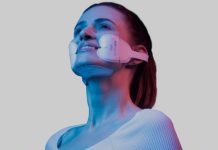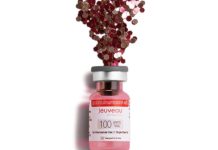My stylist said to me the other day, “Today I have a lash fill; tomorrow I have to get my nails done and next weekend is my Botox. I feel like I never have time for myself anymore.” Wait, wasn’t the spa built around “me-time?” I knew the sentiment was not supposed to match the declaration, but it did. Even as an esthetician, I could relate.
Beauty standards are vast and ever-changing. The desire for enhancements is accelerating post-pandemic following the “Zoom Boom,” time spent on social media, filters and the work-from-home option for surgical recovery. More people want to achieve the look they see in the media and the face they see with filtered effects. With these changes come much more maintenance, and suddenly, appointed rituals can feel like expectations or chores instead of that special visit to the spa to refresh ourselves.
When did “I can’t wait to” turn into “I have to?” And when did some treatments, such as Botox, transfer from a taboo extreme to the normalized skin care routine of today?
Changing the Beauty Scale
If beauty standards were on a scale today, we might observe something that has a range that looks like this: Expected-Routine-Daring-Taboo. Take a moment to decide which beauty appointments fall into which category. How much of your decision is influenced by society or culture? How have your decisions changed over the years?
For instance, we could agree that showering has been expected for decades, along with cutting your nails, shaving, brushing your hair, etc. Today, the “expected” bin may overflow depending on your perspective. You may observe an expectation of white teeth or a full face of makeup. Once “daring,” tattooed brows are now just routine microblading for many. Not long ago, injectables were considered taboo. As treatments slide down the scale, the question arises of what even remains taboo?
Accepting Cosmetic Procedures
Cosmetic surgical and non-surgical procedures have become more sophisticated, safer and more accessible, changing society’s attitude toward it. This acceptance contributes to why surgical procedures have doubled over the last decade.
According to the annual statistics released by the Aesthetic Society, Americans spent $14.6 billion on cosmetic procedures in 2021.1 Non-surgical procedures increased by 44%, with Botox and fillers taking the reins making up over 5.5 million procedures. As were surgical procedures, up by 54% from 2020, with the leading procedures being liposuction, breast augmentation, abdominoplasty (tummy tuck), mastopexy and blepharoplasty.1
Continue reading about taboo beauty in our June Digital Magazine…
Erika Lauren, L.E. is a licensed esthetician and airbrush tan artist from Massachusetts with over 15 years of experience. She currently operates her business Art + Sol in Virginia and implements her writing degree by contributing literature to the esthetic community.






